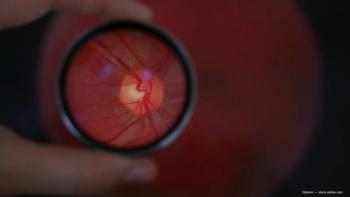
Brolucizumab noninferior to aflibercept for treating DME with few injections
Dilsher Dhoot, MD, reports results of the KESTREL and KITE trials, in which brolucizumab was compared with aflibercept for treating diabetic macular edema.
Reviewed by Dilsher Dhoot, MD
The KESTREL and KITE studies compared brolucizumab (Beovue, Novartis) with aflibercept (Eylea, Genentech Inc.) for treating diabetic macular edema (DME).
During the American Academy of Ophthalmology 2021 annual meeting in New Orleans, Dilsher Dhoot, MD, from California Retina Consultants, Santa Barbara, California, reported results from the studies, including several key take-home points.
Brolucizumab 6 mg met the primary study endpoint of noninferiority to aflibercept regarding the mean change in the best-corrected visual acuity (BCVA) at week 52 with fewer injections.
More than half of the patients (55.1% in the KESTREL Study and 50.3% in the KITE) who received the 6-mg dose of brolucizumab maintained the VA on an every-12-week treatment interval up to week 52 immediately after they received the loading dose.
A median of 7 injections were administered to the patients treated with brolucizumab compared with 9 injections in the patients treated with aflibercept out to week 52.
Robust improvements were seen in the central subfield thickness from baseline with brolucizumab 6 mg. More patients on brolucizumab achieved a decrease in the central subfield thickness exceeding 280 µ at weeks 32 and 52.
More patients treated with brolucizumab 6 mg had overall resolution of intraretinal and subretinal fluid and resolution of intraretinal fluid at week 52.
Brolucizumab fared better than the 2 mg dose of aflibercept in the KITE study. In addition, the Diabetic Retinopathy Severity Scale score showed clinically relevant improvements at Week 52 compared with baseline, that is, 2 or more steps.
Brolucizumab demonstrated an overall favorable benefit/risk profile. The safety data from the KESTREL and KITE studies did not show that the underlying diabetes negatively impacted the brolucizumab-related incidence of intraocular inflammation.
This article is adapted from Dhoot’s Retina Subspecialty Day presentation at the American Academy of Ophthalmology 2021 annual meeting in New Orleans. He is a consultant/advisor to Novartis.
Newsletter
Don’t miss out—get Ophthalmology Times updates on the latest clinical advancements and expert interviews, straight to your inbox.








































